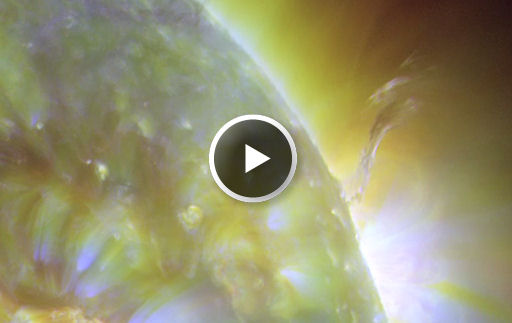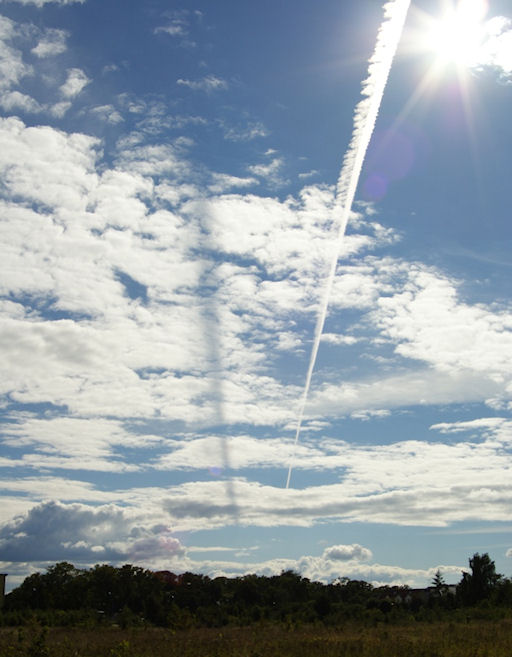AURORA ALERTS: Did you miss the Northern Lights? Next time get a wake-up call from Space Weather PHONE | | |
FIREBALLS LIGHT UP JUPITER: In a paper published Sept. 9th in the Astrophysical Journal Letters, a group of professional and amateur astronomers announced that Jupiter is getting hit surprisingly often by small asteroids, lighting up the giant planet's atmosphere with frequent fireballs: full story.
ALIEN BEAUTY: Multiwavelength images of the sun beamed to Earth by NASA's Solar Dynamics Observatory (SDO) have a beauty that can only be described as ... alien. We've never seen the sun quite like this before. Consider the following movie of the Sept. 8th eruption of departing sunspot 1105:

SDO sees the sun through a set of extreme ultraviolet filters that go far beyond the limits of human vision. That's good because extreme UV is where the action is; it's the kind of radiation that solar activity loves to emit. But sometimes it looks a little unfamiliar.
Today's highlighted movie was created by Ralph Seguin of Lockheed-Martin's Solar and Astrophysics Lab. He combined data from three of SDO's extreme UV filters, chosing wavelengths (211 Å, 193 Å, and 171 Å) favored by plasma in the temperature range 1 to 2 million degrees K. Hot stuff! Another movie at 304 Å shows cooler gas, around 80,000 K. By comparing the hot movie vs. the cool movie, researchers hope to learn much about the underlying physics of the eruption.
Look for more alien beauty at NASA's SDO home page.
TRICKY CLOUD SHADOWS: Which is higher, the contrail or the fluffy clouds? Inspect the shadows, then scroll down for the answer:

Contrary to appearances, the contrail is higher. It must be, because its shadow falls down on the clouds below.
Joanna Fengler took the picture yesterday from Rewal, Poland. "I was walking at the seaside with my family when we noticed this nice shadow cutting acoss the sky. It was a nice holiday atmospheric observation and an opportunity to explain the phenomenon to my small daughter."
Contrail shadows can be very tricky. They often appear to be on the wrong side of the contrail, disobeying the basic rules of ray propagation. Atmospheric optics expert Les Cowley explains the phenomenon here. When you see a contrail in the sunlit sky, look for the shadow. Where you find it might surprise you.
Sept. 2010 Northern Lights Gallery
[previous Septembers: 2009, 2008, 2007, 2006, 2005, 2004, 2002, 2001, 2000]
Potentially Hazardous Asteroids (
PHAs) are space rocks larger than approximately 100m that can come closer to Earth than 0.05 AU. None of the known PHAs is on a collision course with our planet, although astronomers are finding
new ones all the time.
On September 10, 2010 there were 1144 potentially hazardous asteroids.
Notes: LD means "Lunar Distance." 1 LD = 384,401 km, the distance between Earth and the Moon. 1 LD also equals 0.00256 AU. MAG is the visual magnitude of the asteroid on the date of closest approach. | | The official U.S. government space weather bureau |
| | The first place to look for information about sundogs, pillars, rainbows and related phenomena. |
| | Researchers call it a "Hubble for the sun." SDO is the most advanced solar observatory ever. |
| | 3D views of the sun from NASA's Solar and Terrestrial Relations Observatory |
| | Realtime and archival images of the Sun from SOHO. |
| | from the NOAA Space Environment Center |
| | from the National Solar Data Analysis Center |

